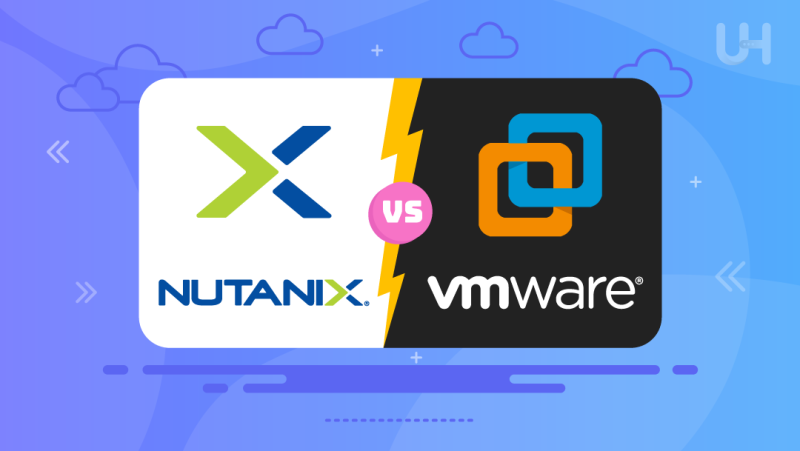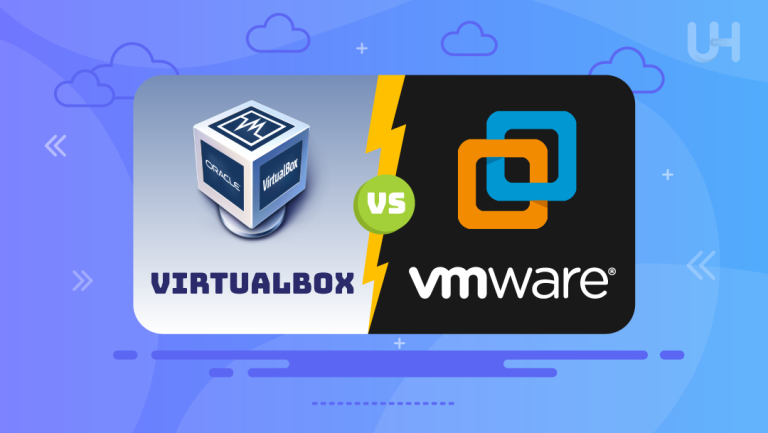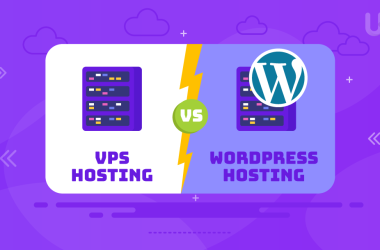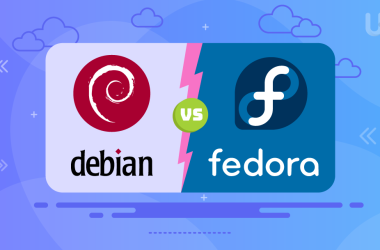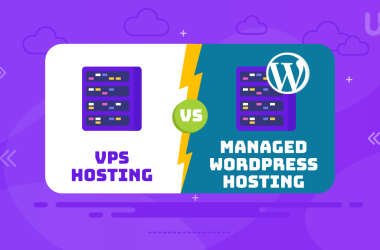Virtualization has indeed changed the ball game for IT infrastructure management across organizations. Nutanix and VMware are the two leading vendors in this domain, offering end-to-end solutions for all kinds of businesses. Comparisons such as Nutanix vs VMware feature as more companies weigh options on which platform to use.
In this article, we will go over the differences, advantages, and key factors that will help you decide on VMware or Nutanix for your organization’s needs.
What is Nutanix: An Overview
Nutanix is regarded as one of the important vendors within the hyper-converged infrastructure marketplace. The company, which was founded in 2009, offers a single platform for computing, data storage, and networking-thereby simplifying IT operations and reducing complexity. Lying at the core of Nutanix’s product suite is its Acropolis software stack, comprising a distributed storage fabric, application virtualization management, and hypervisor capabilities. The mission of the company is to simplify data center operations through the delivery of an infrastructure that emulates the advantages of cloud services yet is hosted on-premises.
At the heart of Nutanix’s solutions lies the Acropolis Operating System, which furnishes the essential infrastructure services and underpins all deployments. Meanwhile, Nutanix Prism provides a common management interface that makes it easier to manage both virtualization and containerization environments. Furthermore, the Nutanix platform is designed to be hardware-agnostic, allowing organizations to select the hardware that best meets their requirements while maximizing the advantages of the Nutanix software stack.
Key Features of Nutanix
- Simplified Infrastructure Management: Nutanix integrates and streamlines the management of infrastructure.
- One-Click Operations: Provides easy upgrades and patching, reducing administrative overhead and minimizing downtime.
- Data Integrity and Protection: Inbuilt features such as replication, deduplication, and compression ensure enhanced storage efficiency and reliability.
- Strong Scalability: Supports current and future needs without complicated configurations or disruptive migrations.
- Quality Virtualization: Nutanix AHV hypervisor is offered free and secure, and eliminates the need for third-party hypervisors.
- Simplified Kubernetes Management: Nutanix Karbon enables easy deployment and management of Kubernetes clusters, allowing seamless use of containerized workloads like VMs.
- Innovative Yet Limitation-Aware: While Nutanix remains innovative, it does have limitations pertaining to specific use cases.d storage efficiency and reliability.
What is VMware: An Overview

VMware, established in 1998, is a leading provider of virtualization and cloud computing software. Its flagship offering, VMware vSphere, has become a recognized industry standard for virtualized data centers. The technology enables multiple virtual machines (VMs) to operate on a single physical server, which optimizes resource utilization and helps lower hardware expenses. In addition to data center virtualization, VMware also delivers solutions for virtualized networks, storage, and end-user computing.
The VMware product suite includes VMware vSphere, VMware vCenter, and VMware NSX. vSphere provides essential components for creating and managing virtualized environments, whereas vCenter offers centralized management capabilities for the virtual infrastructure. NSX focuses on network virtualization and data encryption, allowing for scalable and flexible network management options.
Despite its status as a mature solution with an extensive user base, VMware’s acquisition by Broadcom in 2024 has sparked discussions regarding the future direction of its product line and potential pricing changes.
Key Features of VMware
- High Availability (HA): Ensures minimum downtime by automatically restarting VMs on other hosts in case of hardware failure.
- Distributed Resource Scheduler (DRS): Enhances performance by dynamically balancing computing workloads across available resources.
- Storage vMotion: Storage vMotion allows the transfer of workloads without downtime.
- Security Features: Micro-segmentation through VMware NSX enables granular firewall policies at a per-VM level.
- Snapshots and Cloning: Provides easy backup creation and quick deployment of new VMs.
- Third-Party Integrations: VMware’s ecosystem supports a wide range of integrations, offering flexibility for diverse IT needs.
Nutanix vs VMware: Table of Comparison
Here is a detailed comparison table between VMware vs Nutanix:
| Aspects | Nutanix | VMware |
| Management features | Provides Prism for centralized access and a multi-cloud interface. Offers Al-driven operations and root cause analysis. Known for its “single pane of glass approach | Offers vCenter, a centralized platform for managing vSphere environments. Supports broad ecosystem integration, including vSphere, vSAN, and vRealize Suite |
| Licensing | Subscription-based licensing Licensing plans are categorized by node type and feature. Per-core licensing for certain products, with specialized VDI licensing based on user counts. | Subscription model with per CPU, per core, and per VM options |
| Performance and scalability | Works well with the top hypervisors, including VMware ESXi and Microsoft Hyper-V. Uses distributed architecture to allocate resources | Leverages advanced virtualization technology Lets you create a Kubernetes control pane on the hypervisor layer. Uses Distributed Services Engine to offload network and security functions. Supports external SAN systems for handling large volumes of data |
| Security | Offers AES 256 encryption.Provides Nutanix Security Central for centralized management of security threats. | Provides comprehensive lateral security solutions.Offers VMware Contexa for threat intelligence. Offers FIPS 140-2 and 140-3 certifications for compliance. |
| Integration capabilities | Offers a strong ecosystem but lacks key partnerships with hardware vendors and hyperscalers.Doesn’t work with external storage solutions | Offers a robust and comprehensive ecosystem.Supports a wide range of enterprise environments. |
Transform Your Virtualization Experience Now!
Are you in search of high-performance VM hosting solutions? Look no further than UltaHost, where we provide state-of-the-art VM hosting services tailored to meet both personal and enterprise requirements. With our robust infrastructure and exceptional support, you can count on your virtual machines to operate seamlessly and efficiently.
Management Features: Nutanix vs VMware
Integrating the essential elements of your IT infrastructure into a single platform is already an advantage. Now, imagine how much more beneficial it would be to use an HCI solution that offers strong and user-friendly management tools.
Nutanix
Nutanix’s Prism tool provides centralized access and a multi-cloud interface for managing and monitoring cloud environments. Its “single pane of glass” approach allows users to view key metrics and configurations easily. Prism leverages AI-driven operations for early issue detection and includes a root cause analysis feature that suggests solutions.
VMware
VMware vCenter is a centralized platform for managing and monitoring vSphere environments. Its “command center” approach enhances visibility and provides easy access to components like vSphere, vSAN, and vRealize Suite. It takes time to learn due to its many features. However, it is a familiar control panel for hyper-converged infrastructure, supported by a strong community of VMware users for assistance.
Licensing and Pricing: Nutanix vs VMware
Pricing and Licensing play an important role when comparing different platforms. Here is an overview of the pricing structure for each:
Nutanix
Nutanix has a simple pricing model based on subscription plans categorized into Starter, Pro, and Ultimate tiers, facilitating easy cost estimation as you scale. Certain products, like Nutanix Cloud Manager, use a per-core licensing approach, while specialized licensing for virtual desktop infrastructure (VDI) is based on user counts.
VMware
On the other hand, VMware recently transitioned to a subscription-based model following the $69 billion acquisition by Broadcom. This change was made to better serve customers by providing continuous innovation, faster time to value, and more predictable investments. VMware’s licensing plans include per CPU, per core, and per VM models, offering flexibility for deploying and managing server environments.
However, comparing Nutanix and VMware is a matter of distinct advantages. Nutanix’s straightforward licensing approach makes it easier to estimate costs as your business grows, while VMware’s more nuanced structure provides greater flexibility to accommodate a variety of deployment needs.
Nutanix vs VMware: Performance and Scalability
The ability to integrate all hardware-centric systems into a virtualized pool is a significant benefit, especially if an HCI platform has the capacity to run and scale these data center resources on demand.
Nutanix
Nutanix’s strength is its HCI software, which integrates with leading hypervisors like VMware ESXi and Microsoft Hyper-V and offers Nutanix AHV at no extra cost. Its distributed architecture eliminates gaps between public or private and hybrid cloud environments, allowing for effective management of demanding workloads.
VMware
VMware boosts performance and scalability with advanced virtualization technology. By using vSphere and Tanzu, you can create a Kubernetes control plane on the hypervisor layer, enabling IT infrastructure to better manage intensive workloads and enhancing collaboration between vSphere admins and DevOps teams. The vSphere 8.0 Distributed Services Engine offloads network and security tasks to Data Processing Units (DPUs), potentially freeing up 20% of CPU workloads, improving performance, and reducing latency. Additionally, VMware vSphere Hypervisor ESXi supports external Storage Area Networks (SANs) for efficient data management.
Hence, VMware holds a slight advantage. While Nutanix’s distributed approach effectively accommodates diverse workloads, VMware’s advanced virtualization technology provides greater benefits, particularly when managing intensive workloads across multi-cloud environments.
Nutanix vs VMware: Security Comparison
High-priority applications and workloads require effective management, transfer, and use of critical data. To safeguard this data across hybrid multi-cloud environments, it is essential to strengthen your HCI (Hyper-Converged Infrastructure) security posture.
Nutanix
Nutanix offers a robust security framework that helps organizations manage threats to their cloud and virtualization environments. The HCI platform employs AES 256 encryption to protect data from brute-force attacks. Additionally, Nutanix Security Central provides a unified management interface that enables better management and response to security threats across the entire infrastructure.
VMware
VMware utilizes a comprehensive lateral security solution to address various modern threats, including Man-in-the-Middle (MitM) attacks, zero-day exploits, and remote code execution (RCE). One of VMware’s standout features is VMware Contexa, a cloud-based threat intelligence framework that protects networks, endpoints, and workloads. Furthermore, VMware products are certified to meet FIPS 140-2 and 140-3 standards, critical security requirements for cryptographic modules.
Since, both solutions effectively address enterprise-level security threats, enhanced by Cloudflare Server Hosting. The best choice will ultimately depend on your specific security needs.
Integration Capabilities: Nitanix vs VMware
An effective HCI (Hyper-Converged Infrastructure) solution must possess strong integration capabilities, as its primary function is to unify various components into a single central hub.
Nutanix
Nutanix has a robust ecosystem, but it could enhance its offerings through key partnerships with hardware vendors and hyperscalers. Additionally, Nutanix HCI does not support external storage solutions, such as Fibre Channel and iSCSI disk arrays. This limitation can be a significant drawback for organizations that need a more flexible storage solution to manage mission-critical workloads.
VMware
However, VMware benefits from a vast network of partners, including Hewlett Packard Enterprise, Wipro Limited, and Atos. This extensive partnership network leads to a strong HCI ecosystem that helps meet the diverse needs of enterprise environments effectively.
With VMware’s established ecosystem of trust, you receive an HCI solution that meets the most demanding workloads across multi-cloud environments.
Which One Should You Choose? VMware or Nutanix?
When evaluating Nutanix hypervisor vs Vmware, the decision ultimately hinges on several critical factors that align with your organization’s unique requirements:
Business Goals
Consider whether your focus is on simplicity or control. Nutanix offers a more streamlined and user-friendly interface, making it an excellent choice for organizations prioritizing efficiency and ease of management. On the other hand, VMware provides a higher level of customization and control, which is beneficial for businesses with intricate virtualization needs that require tailored solutions.
Budget
Evaluate your financial constraints and expectations. Nutanix often positions itself as a cost-effective solution, delivering robust features at a lower price point, making it suitable for smaller organizations or those with tighter budgets. Conversely, VMware, while generally more expensive, offers premium features that might justify the investment for larger enterprises seeking comprehensive virtualization capabilities.
IT Skillset
Assess the technical expertise of your IT team. Nutanix is designed with simplicity in mind, requiring less technical know-how, which can be advantageous for smaller IT departments or those with limited experience. In contrast, VMware might necessitate a more skilled workforce, as its advanced functionalities demand a greater level of technical proficiency.
For organizations with smaller IT teams that aspire for a more straightforward and efficient approach, Nutanix is often the ideal choice. In contrast, large enterprises with complex virtualization demands will likely find VMware to be the superior option.
Additionally, to enhance your performance, consider exploring optimized hosting solutions such as Dedicated Server Hosting, which is engineered to deliver enterprise-level performance tailored to your specific needs.
Conclusion
Both VMware and Nutanix are powerful virtualization platforms, each excelling in unique ways. Nutanix is ideal for hybrid-cloud simplicity and cost efficiency, while VMware is best suited for large-scale enterprise deployments requiring detailed control.
For reliable and scalable virtualization, choose KVM VPS hosting from UltaHost. Our KVM VPS solutions provide dedicated resources and excellent performance, ensuring your virtual environment operates optimally.
FAQ
What is the primary difference between Nutanix and VMware?
Nutanix focuses on hyper-converged infrastructure, while VMware offers a broader suite of virtualization tools.
Which is more cost-effective: Nutanix or VMware?
Nutanix is generally more cost-effective due to simplified licensing, while VMware offers premium features at a higher price.
Can Nutanix and VMware be used together?
Yes, Nutanix infrastructure can support VMware workloads.
Is Nutanix better for hybrid cloud environments?
Yes, Nutanix excels in hybrid cloud integration.
Is VMware suitable for large enterprises?
Absolutely, VMware offers robust tools for large-scale virtualization.
Which platform is easier to manage?
Nutanix offers a more user-friendly experience, while VMware requires advanced technical knowledge.
Can I migrate workloads from VMware to Nutanix?
Yes, migration tools are available for seamless workload transitions.





